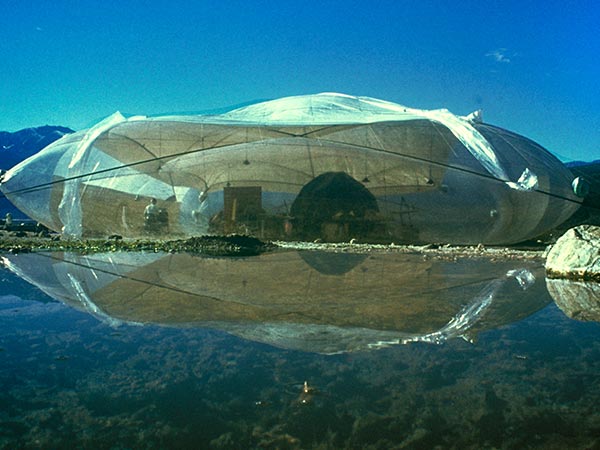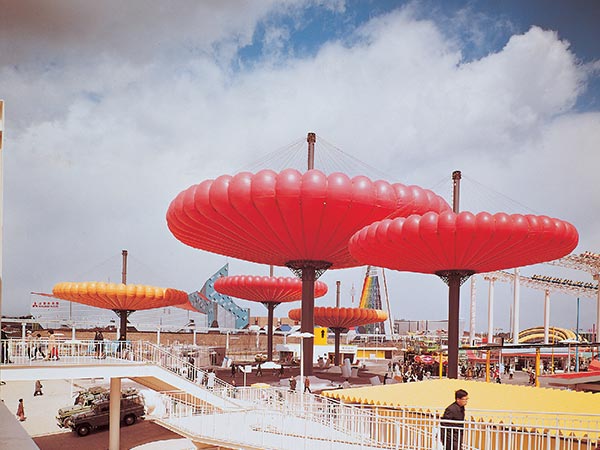

Bubble Architecture

50 x 50’ Pillow, Ant Farm, courtesy of Curtis Schreier

As the populations in cities began to grow sharply in the 1950s, governments began accelerating the process of urban development. Slums and suburban housing estates were destroyed to make way for large-scale functionalist housing blocks built using steel and concrete. This type of ‘brutalist’ architecture was often criticised for its oppressive appearance and for leading to poor quality housing.
This prompted young architects and urban planners to explore the possibilities of temporary and mobile architecture using inflatable media. This section of the exhibition shows how advancements in new media and space technology in the 1960s, inspired radical architects to use inflatable structures to question the conventions of permanent architecture. They envisioned ephemeral future habitats featuring mobile, adaptable and retractable structures. Their ideas for instant inflatable cities and bubble enclosures aligned well with the emergence of the environmental movement in in the 1960s, and an alternative hippie culture. By the 1970s, inflatable architecture was being featured in mainstream settings too, such as the Osaka World Exhibition of 1970.
List of artists: Ant Farm, The Yes Men, Tanero Oki Architects, Graham Stevens

SurvivaBall, The Yes Men, 2006, 140 x 140 x 140cm, Nylon, air blowers, helmet SurvivaBall, nGbK Berlin, 2018, Photo copyright: Luca Girardini


Mush Balloon, 1970, Expo, Osaka, Japan Courtesy of Tanero Oki Architects